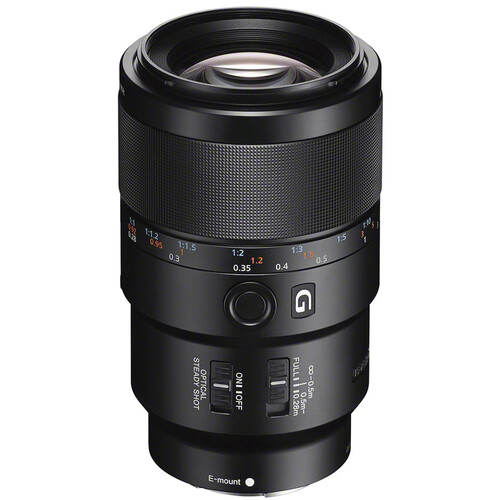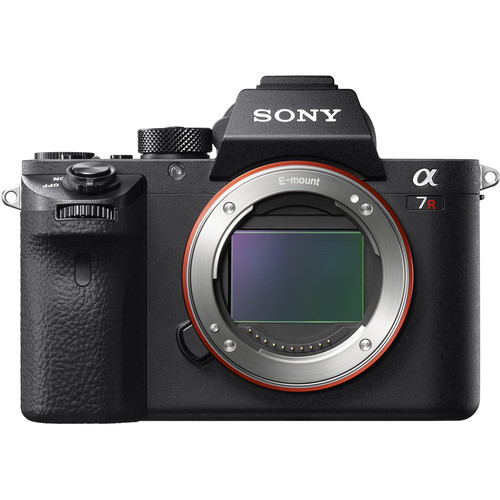
Sony Alpha a7R II Mirrorless 42MP/4k Video Digital Camera
It’s rare for me to release two preview articles before doing a review, but given what this camera can do I felt it was worth it. If you haven’t seen those articles already, then please check them out first here:
After reading those articles you can see that I quickly fell in love with this camera. It’s high quality images and video are without question, the best available on the market today. In fact, there’s a lot of people coming up with interesting photographers excuses for getting this camera and/or switching camps.
Will I also jump camps too? Read on to find out!
Using the a7R Mark II
If you are familiar with Sony cameras then you’ll be right at home with the menu layout this camera offers. If you aren’t, then you’ll fantasize of punching the engineers who designed the menu system in the nose as it’s painful to find what you are looking for! Fortunately each iteration of Sony cameras seems to incorporate user feedback, so this means the feature you are looking for is likely there – it’s just challenging to find it!

f/4 @ 31mm for 1/125 sec at ISO 8000
ISO 8000 – straight out of the camera with no edits – impressive!!!
Try that with a D810 and you’ll be deleting that one in camera before it even gets to the computer!
One of my biggest complaints about Sony in the past is that they always chose horrible shutter speeds for Aperture priority which resulted in blurry pictures. To address this problem this camera offers an option to allow you to adjust from the default values to a faster (or slower if you prefer) shutter speed then what it would ordinarily choose. What this looks like in real world testing is that where it would historically use 1/60 sec, it will now use 1/125 sec (see above) which is important when using a high megapixel camera like this. More megapixels means faster shutter speeds are required to get a stable shot, so this coupled with excellent 5-way stabilization results in a large number of super sharp shots. These improvements alone are worth the upgrade from previous models based on my testing experience.

f/4 @ 24mm for 1/1000 sec at ISO 3200
Eye AF can be brilliant as was the case here
I also wrote at length about the AF system – specifically the wonderful Eye AF feature – and I can say that yes this camera is very good. While it’s burst mode won’t keep up with many models with faster FPS, it does such a good job at getting sharp shots that spray and pray shooters may find this is all that is needed. The faster FPS will only get you a higher probability of capturing a specific action event (i.e., a basketball in the net) but this camera is likely to have more frames in focus – unless you are using a pro sports camera like the Nikon D4s (the best) or Canon 1D X (2nd best).
The rear LCD pivots which is nice, but I’d still rather it offer the same full rotation functionality that other models from other makers offer. Touch screen would also be nice, so that’s something I wouldn’t be surprised to see in a future model years down the road.
I will say that the wealth of features and the lack of documentation will mean that most people won’t really take advantage of all this camera has to offer. What’s more, many will find themselves overwhelmed with the choices and frustrated by the lack of information on what these features do. However, if you are the type that doesn’t read manuals and just picks up things and figures out how they work then there’s lots of great features to discover here. If you aren’t like that, then your screwed. ;-)
Customizable push buttons allow you to dial things in, but again it’s tough to figure how how to do this if you don’t know the system very well. Fortunately there’s a lot of fans of these cameras writing articles on some of the obscure features so generally the information is available on the web – just not from Sony – on how to program cool features to the programmable buttons. In fact, I discuss this in my autofocus article where I talk about Eye AF.
Simply put, this camera is a bit like using Microsoft Word or Excel. Odds are the thing you want it to do is there and there’s probably 5 ways to do it – the trick is just figuring out how! In fact, they’ve even tossed in a bunch of consumer features like NFC pairing and wireless file transfer.
Another great feature of this camera is the electronic viewfinder. It’s high resolution and works great when you are outside in the sun. Unlike older Sony models, it doesn’t feel fake either – what you see feels very much like an optical viewfinder even though its entirely digital. In fact, it was so good that I found myself preferring to use it over the rear LCD so I could use that rear panel to display my camera settings instead.
Sony Vario-Tessar T* FE 24-70mm f/4 ZA OSS Lens
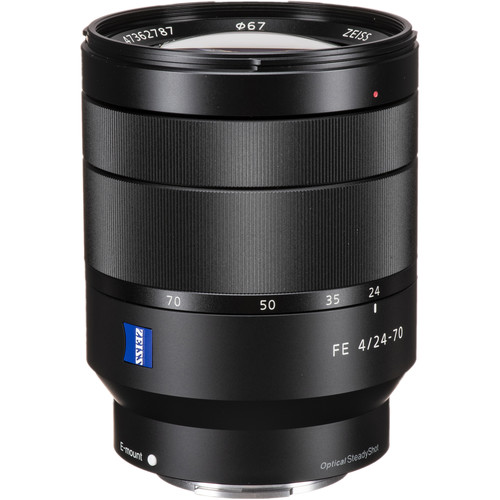
Sony Vario-Tessar T* FE 24-70mm f/4 ZA OSS Lens
On a lesser camera, this lens would be great. However, on this super high resolution sensor this lens fell short by getting out resolved by the sensor. It also had focusing problems that couldn’t be corrected so I’ve got to give a strong recommendation AGAINST this lens.
Personally, if I owned this camera I’d probably fork up the money for the Zeiss Batis 85mm f/1.8 as my primary lens and figure out a good zoom down the road. However, I love this focal range as an every day lens so hopefully the focusing issues I experienced were isolated and/or could be fixed in a new firmware update.
As the photos here will show it’s not completely horrible, but I can easily tell that the sensor is capable of so much more. Yes, manually focusing helps but even the focus peeking algorithm seems to be off with this lens with the unit that I tested.
Real World Shots
Check out these two past articles first:
However, I can’t help but share more as this camera rarely fails to impress me.
Click here to see a complete gallery of test images taken for this review. You may view them along with this review, but you may not print, edit, upload or otherwise redistribute the images in any way. All images are copyright Ron Martinsen – ALL RIGHTS RESERVED.
These are all 100% unprocessed shots taken from the in-camera JPEG. Click the photos to see the original file that came out of the camera in its full resolution. Most shots are using auto white balance and handheld (except where noted), but a few have had white balance adjusted to add warmth. Beyond this, everything else is set to the camera default settings.
Here’s some from that gallery along with my thoughts about them:

f/4 @ 25mm for 1/125 sec at ISO 5000
Nighttime at ISO 5000 and the noise is tolerable.
What really impressed me though was that it didn’t completely blow out the lights (outside the main beams) yet the detail in the grill shadow areas is still excellent

f/4 @ 26mm for 1/125 sec at ISO 2500
This is a shot that most cameras would render the brightest parts as white yet this sensor captures it almost as well as the human eye. Given that this is red, which is tough for any display format, I’m even more impressed!

f/4 @ 53mm for 1/800 sec at ISO 2500
Eye AF isn’t flawless because once you lose that big iris it gets confused and generally undesired results follow as is the case here where Kai’s eyes trip up the system

f/4 @ 36mm for 1/800 sec at ISO 2000
No AF system is flawless, and that’s definitely the case here where the AF system seems to have given up and just focused on the static background. This happened more than you’d see with dedicated pro sports bodies, but as much as I’d expect for a camera in this form factor. The Canon 5D Mark III and Nikon D750 both have the ability to be tuned to nail this shot 100% of the time so keep this in mind before ditching those models for a A7R Mark II!

f/5.6 @ 26mm for 1/125 sec at ISO 5000
Even at ISO 5000, the dynamic range and color are still totally usable and the background preserves the shadows very well but the sky is blown out (which is to be expected)

f/5.6 @ 70mm for 1/500 sec at ISO 160
100% crop of an unplanned shot of an insect that captured much more detail than I was expecting. Given a better lens, this probably would have been print worth even cropped this tightly.

f/5.6 @ 70mm for 1/500 sec at ISO 800
Red’s are probably the toughest for any camera to handle, but the A7R2 does a textbook job at handling the tonal range found here

f/9 @ 70mm for 1/160 sec at ISO 125
In another 100% crop, you can see detail that the naked eye would probably miss most of the time. Click this image to see the full shot and you think it is just a hole in the leaf. My eyes were fooled in real life but the sensor caught detail that I didn’t notice until I zoomed. The slight blurriness here was due to the wind

f/9 @ 27mm for 1/125 sec at ISO 125 (using this tripod)
I first did a shot with just the trees and was impressed with what I saw, but I wondered how the meter (a historically weak feature of Sony) could handle a big black object in the scene. The net result is that it did great! I also was pleased with the flair control of the 24-70, even though I hated that lens!

f/4 @ 70mm for 1/1000 sec at ISO 100
The fun thing about shooting with this camera is that when you zoom in to 100% you discover pictures within your picture. Enjoy the condensation on this leaf when zooming in as well as the delicious bokeh when zoomed out

f/4 @ 70mm for 1/250 sec at ISO 100
This shot frustrated me with this lens partially due to it’s terrible minimum focus distance. However what really annoyed me here is that focus peeking and zooming still failed to give me the detail and sharpness I wanted on the water droplets on the foreground part of the flower.
Once again, I think given a better lens this would be a gorgeous snapshot of a flower

f/5.6 @ 70mm for 1/500 sec at ISO 125
Sorry, this is as close as I got to shooting wildlife – ha ha :-)

f/5 @ 70mm for 1/500 sec at ISO 125
Again, I found myself very impressed with the in-camera color and how well it rendered the range of reds in this leaf. Notice how the highlights on the top aren’t blown out and the shadows on the bottom are muddy. If you photograph nature, this is definitely the right camera for you.

f/5.6 @ 27mm for 1.25 sec at ISO 100 (using this tripod)
Landscape Photographers Rejoice!
f/5.6 is the sweet spot of this lens and the detail on the full-size image is impressive. I took shots at various apertures starting with this one here up to f/22 (see below) and felt all were keepers.

f/22 @ 27mm for 8 sec at ISO 100 (using this tripod)
Even with diffraction, I felt like f/22 shots were total keepers with this sensor

f/4 @ 34mm for 1/125 sec at ISO 800
As a new dad, no blog article this week would be complete without a shot of my daughter Ara.
Look at all that detail! ;-)
Click here to see a complete gallery of test images taken for this review.
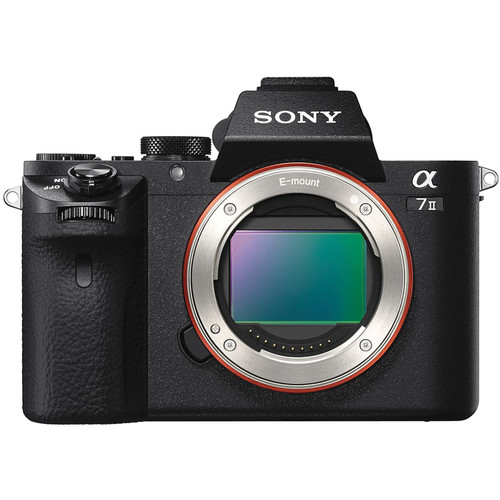
Sony Alpha a7 II Mirrorless Digital Camera
For some people, especially those on a more modest budget, it will probably make more sense to sacrifice 17 megapixels and some dynamic range to get the added benefit of better high ISO performance and faster burst mode performance. The A7 Mark II features many of the same features but with a lower resolution sensor.
I’ve reviewed the A7, but not the A7 Mark II. However, my good friend Douglas Dubler is an extremely well respected pro fashion photographer in New York with hundreds of magazine covers under his belt.
Despite his ability to have any camera on the market that he wants, Douglas has decided that he prefers the A7 Mark II over the A7R Mark II. Below are a couple edited shots he’s taken with his A7 Mark II. Of course he’s using high end Zeiss lenses that are going to make the most of any sensor, so don’t expect these results with the kit lens (or the lens I tested in this review):

Click to learn more about Douglas Dubler’s Indonesian Beauty
Sony A7II at f/4 @ 1/60 sec using ISO 100 with a Zeiss Makro-Planar T* f/2 100mm (via Novoflex adapter) and retouched by Irfan Yonac
Used by permission and Copyright Douglas Dubler 3 – All Rights Reserved

Click to learn more about Douglas Dubler’s Indonesian Beauty II
This image was captured with a Sony A7II at f/4 @ 1/30 sec using ISO 400 with a Zeiss Otus 85mm (via a Novoflex adapter) and retouched by Irfan Yonac
Used by permission and Copyright Douglas Dubler 3 – All Rights Reserved
These are internationally published and very successful images that lack nothing with the “lower” resolution A7 Mark II. This illustrates that 24 megapixels is still plenty enough resolution to wow most clients.
Given the results Douglas Dubler consistently gets (and posts to his Facebook page), it’s clear that with a good lens in the right hands the Sony A7II is sure to please even the most demanding pixel peeper.
This begs the question, does the average person really need to spend twice as much to get the extra 17 megapixels? For many, the answer is probably no.
Be sure to click the images here to learn the story behind these shots too – it’s a pretty fun read!
Please note that you may not print, edit, upload or otherwise redistribute or share the above images in any way. All images are copyright Douglas Dubler 3 – ALL RIGHTS RESERVED.
4k Video
I hate doing videos and could care less about the 4k video feature, but for some this will be a really big deal. Here’s a lame 4k test video I did just to show that is in fact doable at a real 4k 30fps:
You’ll need a 4k display like the NEC PA322UHD to actually watch that video in its true 4k format, but if you’ve got the hardware you’ll see that it does work as advertised – when you use the right memory card! I didn’t have the required SDXC memory card so I purchased one of these which worked fine during my testing:
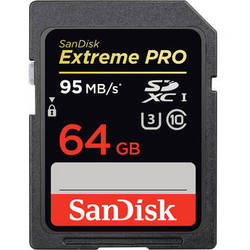
SanDisk 64GB Extreme Pro UHS-I SDXC U3 Memory Card (Class 10)
With video a memory card either works or it doesn’t, so don’t feel the need to buy a faster SD card than the 95 mb/s SDXC card shown above as my real world testing hasn’t found any benefit of doing so. I do find Sandisk to be the most reliable, so I do think it’s worth the extra bucks to stick with a reliable brand over cheaper alternatives.
Personally I’ll use a iPhone 6s for my 4k video needs for video stabilization and face focus tracking, but if you want professional caliber results and you know what you are doing then this camera is sure to please.
What about the a7s Mark II vs the other a7’s?

Sony Alpha a7S II Mirrorless Digital Camera
If you are really into video as your primary activity, then the a7s makes more sense for you. This is the model that is optimized for the hardcore videographer where the a7R is optimized for the hard core photographer. The a7 hits that sweet spot in the middle that for the average user looking for the best value of a easy to use general purpose camera.
Bookshelf Test

f/8 @ 24mm for 13 sec at ISO 100
Click for full-size and see below for a 200% crop
When doing super high resolution testing I look for detail in the shoes and the pattern in the spine of the blue book on the bookshelf. You can see below that the texture does start to appear and the tiny details are present:

Cropped at 200% Zoom of the in-camera JPEG above
I suspect that a better lens would resolve this detail better, but this is still on par with the 5Ds/5DsR and D810.
High ISO Performance

f/4 @ 24mm for 1/400 sec at ISO 102,400
Yes, this camera can do ISO 102,400 as shown above which seems fine if you output is small images on the web. However, if you click the file to see the original you’ll see it’s pretty bad. My personal maximum ISO for this camera was ISO 12,800 (example), but I can say that to the naked eye the high ISO performance was an improvement (to my eyes) over the Canon 5Ds / 5DsR and Nikon D810 after ISO 1600.
The camera defaults to a maximum of 6400 and I think that’s a practical maximum for all but extreme cases, but if you need it is certainly very usable up to 12,800. In fact, you’ll notice some ISO 8000 shots in my real world shots section that are pretty impressive.
Click here to see a complete gallery of bookshelf images taken at various ISO’s and apertures for this review.
What’s there not to like?
Well the price for starters – at over $3000 at the time this was written, this is really price for serious photographers only. You do get what you pay for, but don’t forget you still need to buy lenses too so realistically give yourself a $5000 – $7000 USD starting budget if you decide to go this route (after you purchase the camera, lens and basic accessories).
The battery life was also pretty bad – generally I got about a half day of use before it died so I’d definitely recommend getting an extra battery and keeping it fully charged if you purchase this camera.
There is also the reality that while this camera is a smaller form factor – it isn’t really light. In fact, when handing it to others to take a picture you get that same “wow, this is heavy” reaction that you hand over a DSLR. So, if you decide to go this route don’t fool yourself into thinking you’ll be “traveling light” because there are entry level DSLR’s and offerings by Fujifilm that will definitely be much lighter. The weight of this camera is put to good use with great features and stellar performance so if your real motivation is image quality then this camera or its sibling the A7 Mark II is sure to please.
I think the lens choice used for this review didn’t allow it to shine as well as it is capable of doing. If matched to better glass, I’d expect the A7R Mark II to come out ahead of both the Canon 5Ds and 5DsR as well as the Nikon D810. However, there in lies the reality – Canon and Nikon have a lot better lens offerings so I can’t advise anyone to switch from those platforms to Sony when you consider the big picture. If you are a hobbyist and will only be using one or two lenses, then it probably is ok, but if you are a pro who is going to be using the best glass and flashes then this probably isn’t the best platform for you in the long run.
Finally, my last complaint is that I’m not a fan of how Sony lays out its menus but they do offer enough customization that you can almost work around it once you have things dialed in. I hate them and curse them, but rarely did they prevent me from getting the shot. What’s more there’s enough cool features packed in like the support for apps and neat features like Zebra, Focus Peaking and Focus Magnification that make all of the menu options worth it.
Conclusion
While I’m very disappointed in the lens I used for this review, I’ve done enough camera reviews to know that this is a very special camera that will boggle the mind when paired with a proper lens. Douglas Dubler’s results with the a7 Mark II with good glass prove that, and this camera offers twice the resolution and a wider dynamic range.
At times during my review I loaded up my cart at B&H to order one for my personal use to replace my Fujifilm X series camera, but then my logical side kicked in. I’m happy with the performance I get with my Canon gear, my lens choices and the flash system. If I was a Nikon shooter, I’d feel the same way. However, I think if I was exclusively a Fujifilm shooter then I’d probably be switching camps, but I’m not so for now I’ll probably stick with what I have.
This is a fantastic camera that is a must upgrade for anyone on the Sony platform – even existing a7R shooters – as this body seems to address everything I didn’t like about its processor. It’s clear that Sony has listened to customer feedback and responded with what is arguably one of the best cameras on the market. It’s decision to add 4k video recording also makes it extremely compelling to videographers as well.
I do HIGHLY RECOMMEND this camera and do feel it is one of the best cameras I’ve ever tested. I also found its Eye AF feature to be worth the cost alone when photographing kids, so parents are sure to love this feature. The stabilization is also the best I’ve tested on a super high resolution camera, so the faster shutter speed requirements of the 5Ds/r and D810 don’t seem to be as applicable with this camera.
Where to order
Click here to learn more or order on the B&H web site.
Other articles you may enjoy
If you enjoyed this article, you may also enjoy these:
Disclosure
If you make a purchase using links found in this article, I may make a commission. It doesn’t cost you a penny more, but it does help to support future articles like this.
NOTE: This site requires cookies and uses affiliate linking to sites that use cookies.
. Either way, your support is greatly appreciated!
This blog is intended for freelance writing and sharing of opinions and is not a representative of any of the companies whose links are provided on this site.
The opinions provided are of Ron Martinsen alone and do not reflect the view of any other entity
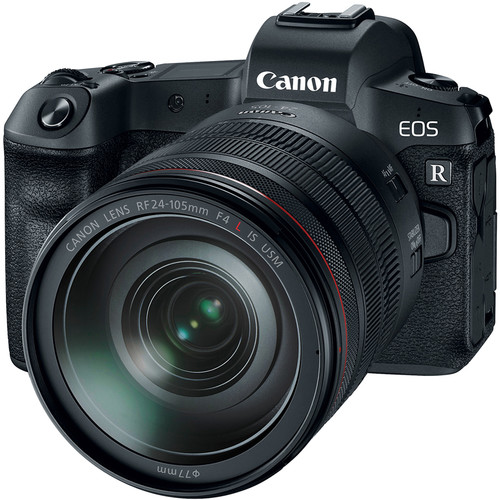

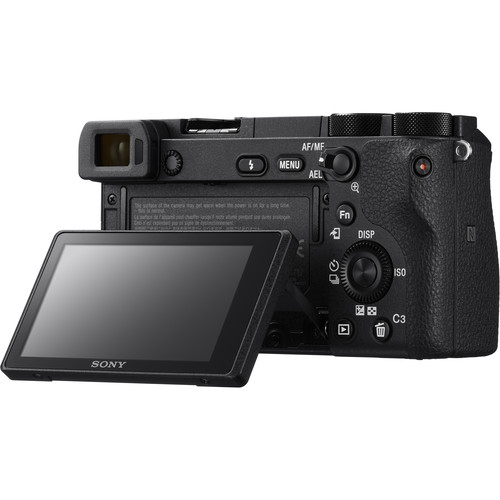








![image[5] image[5]](https://blogger.googleusercontent.com/img/b/R29vZ2xl/AVvXsEhyc3xNzRdCV0JFIA-r3pK70c8xhkXW-BHaAZiLbNsrpqZh8Hk_k2F9XLL8O5NOjKDgwvFQstL4DzkMXTEZzQPqq2-1yNy4xsiaS6cBwErObvzT_gKxiMFzsarUsWDql8EZfA_mP47_t7ig/?imgmax=800)







